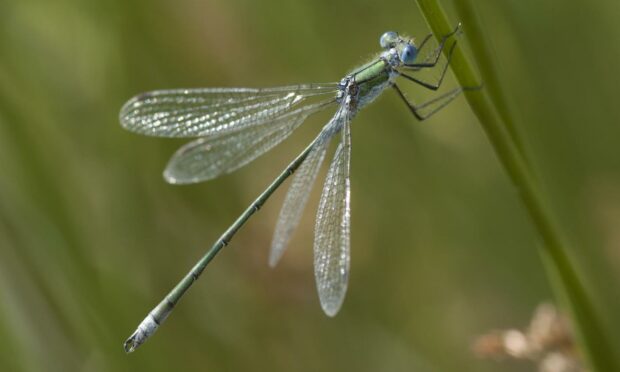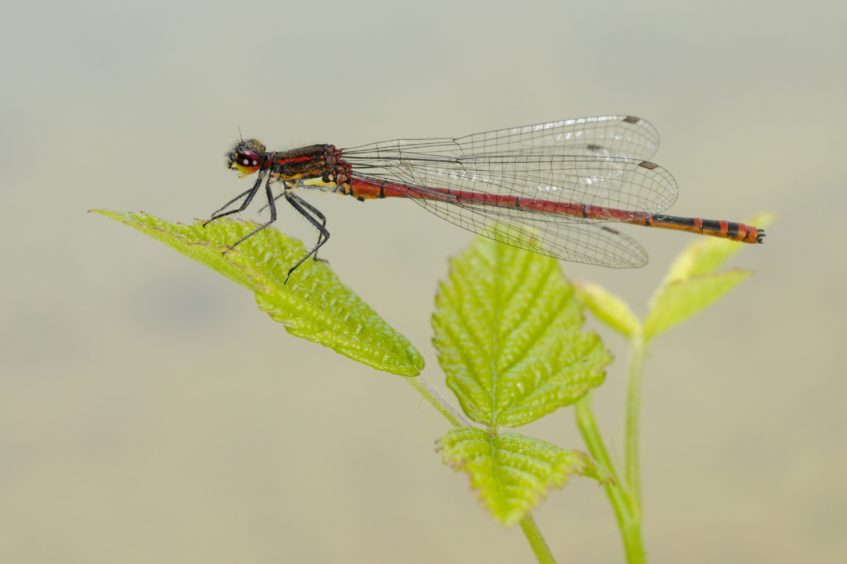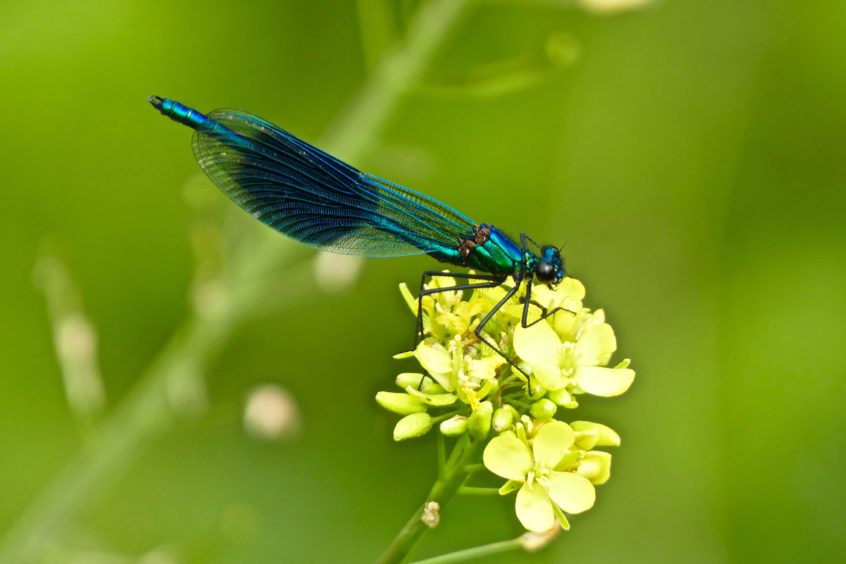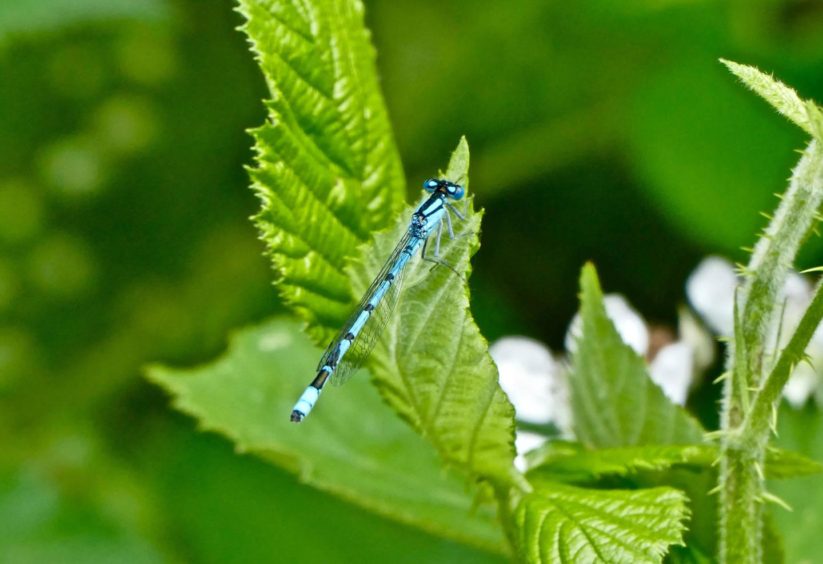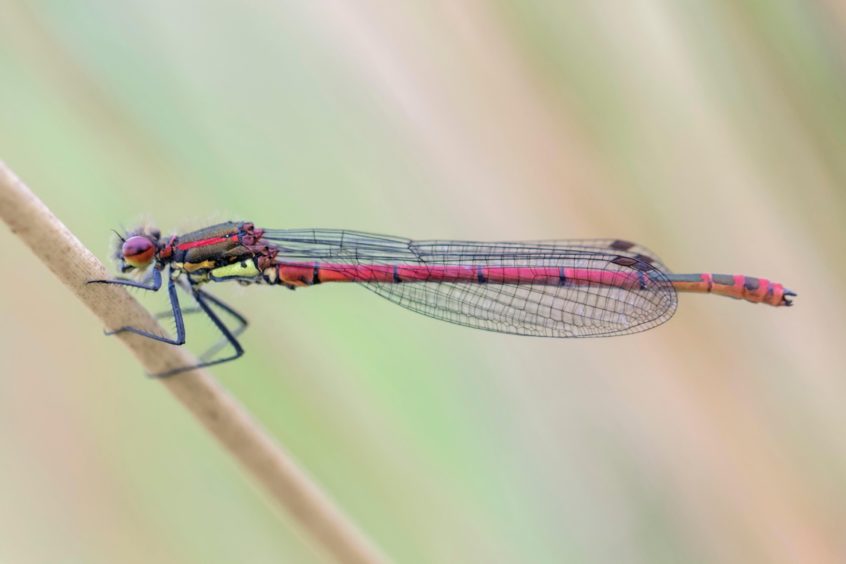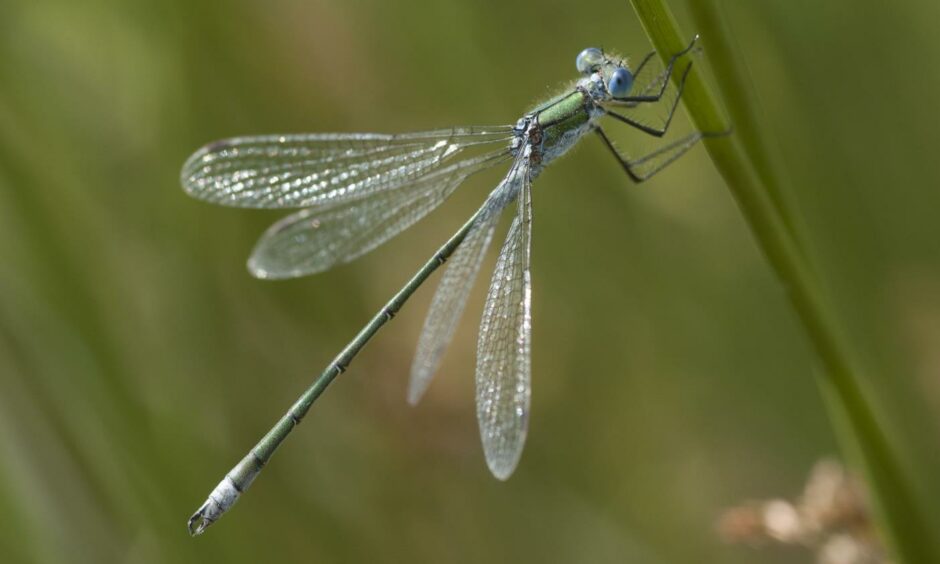The lochs and lochans scattered across the wildwoods of Strathspey are sparkling, silvery oases where ospreys soar high above in the sky and dragonflies and damselflies flit by their boggy margins.
On a recent visit to Rothiemurchus Forest near Aviemore, I took the popular tourist path along the edge of Loch an Eilein, before veering off to embark upon a circuit of the smaller and more tranquil Loch Gamhna.
Here, iridescent common blue and large red damselflies skimmed the water edges on weak and fluttering wings.
Their erratic movements contrasted with the much more purposeful and direct flight of four-spotted chaser dragonflies, which were also abundant.
The flight of the four-spotted chasers was all very precise and angular – forward, hover, sharp left, straight up, hard right and then back down again; the large eyes scanning the air for small flies to hunt down.
Their two-paired wing arrangement of the four-spotted chaser ensures amazing agility, and they can manoeuvre like an attack helicopter by flying sideways and even backwards, as well as being capable of sudden forward surges of speed.
It is this superlative aerial ability that makes dragonflies such deadly winged predators. Damselflies, too, are hunters of small insects.
Feverish mating
At Loch Gamhna, the blue and large red damselflies were intent on feverish mating, chasing one another and often coupling in the air.
Once mated the female damselfly or dragonfly lays her eggs in the water or on adjacent aquatic vegetation, which hatch into six-legged carnivorous larvae (nymphs) that lurk on the bed of a pond or loch.
They are voracious predators that seek out a wide range of invertebrate and other prey such as tadpoles and small fish.
Then, after a couple of years or more, the nymph crawls out of the water onto the stem of plant and from its larval skin emerges a vibrant adult winged insect.
It is like the unfurling of a sparkling jewel.
The contrast in lifestyle and difference in appearance between the larval and winged stage could hardly be greater, which is part of their appeal.
Dragonflies and damselflies have been described as ‘birdwatchers’ insects’ because their size and colour make them stand-out from the crowd, and they are easy to watch through binoculars.
With their long pencil thin bodies and multi-coloured hues, these wonderful creatures rival butterflies for their beauty.
Scotland holds three species of dragonfly that are found nowhere else in Britain – the northern damselfly, azure hawker, and the northern emerald – underlining the important responsibility this country has for their conservation.
On watching the iridescent flashes of the damsel and dragonflies whizzing across these forest lochs, I reflected that it was the insects that make the wildwoods of Strathspey so special.
The crested tits, capercaillies and crossbills get all the plaudits, but the insects are the driving force of the much of the life here, and their colour and variety are both compelling and addictive.
INFO
Dragonflies and damselflies generally prefer still and running shallow freshwater areas, as well as open woodland, and the conservation of such areas not only benefits dragonflies but also a whole host of other fauna and flora.
